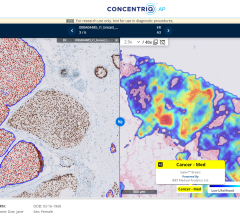
An enhanced patient experience can reduce providers’ exposure to liability, increase care compliance and positively impact providers’ reputations in the care community.
Two unrelenting forces are on a crash-course in healthcare: The rising volume of patient out-of-pocket payments and increasing patient demands for personalized engagement.
Self-pay and self-pay with insurance account balances have increased in number and value and are projected to exceed 30 percent in 2018. At the same time, patients are becoming more comfortable interacting with providers on multiple platforms and understand the benefits of better patient-provider engagement. In fact, it’s something they are coming to expect from their healthcare experience. As patients are responsible for a higher percentage of their healthcare bills than ever before, they have the leverage to demand change.
Providers are attempting to adapt, already taking strides to conform to their patients’ requests for tech-powered communications. But while 71 percent of providers say improving patient engagement is a top priority in their organization, just 29 percent of patients give their providers an “A” for technology-enabled engagement.
Health systems and private practitioners alike need to meet the challenge head-on to show leadership in engagement and keep patients satisfied. Buck the status quo by treating patients as they see themselves: savvy consumers.
Bridging the Gap: Treating Patients as Consumers
Take a cue from retail giants, like Amazon, who continually innovate to make the consumer experience more transparent, familiar and seamless.
In healthcare, engagement excellence is in the eye of the bill-paying beholder. More than superior service and satisfaction, healthcare engagement now includes price and quality transparency, operational excellence, personalization, electronic outreach, customer loyalty, one-click online payments and automated billing. These high consumer expectations continue to rise as healthcare costs increase.
Providers who tap into the desire for a consumer-centric healthcare experience will reap the benefits. While patients may not always have the ability to choose their healthcare provider or service location, their healthcare experience does dictate their likelihood of responding to payment requests.
An enhanced patient experience can reduce providers’ exposure to liability, increase care compliance and positively impact providers’ reputations in the care community.
Delivering tailored experiences also drives customer loyalty, with 70 percent of consumers saying a service provider’s understanding of their individual needs influences their loyalty.
Become a Patient-obsessed Organization
Adopting a consumer-obsessed engagement model is key to improving patient satisfaction and converting billing to revenue. Here are five ways health systems and practices can lean into patient engagement with strategic consumer outreach solutions.
1. Personalize Payment Portals
Seventy-four percent of online consumers get frustrated with websites when content appears that has nothing to do with their interests. The same applies to healthcare patients who want an easy-to-access portal with all relevant clinical and billing information available at a moment’s notice.
Simple personalization practices help patients feel that their online experience is tailored to them. Greet the patient with a personalized message using their first name and give patients the ability to set preferred out-of-pocket payment methods and contact information for appointment reminders and confirmations.
2. Facilitate Patient Satisfaction
The loss of a patient due to dissatisfaction can result in a loss of more than $200,000 of revenue over the lifetime of a practice. Revenue cycle management leaders suggest helping patients help you by providing multiple payment and communication touchpoints, including patient-initiated payment plans, intelligent statements, secure payment processing and mobile capabilities to improve patient satisfaction.
Syncing revenue cycle management strategies with patient engagement initiatives can help patients better understand their care and the associated costs.
3. Offer Pricing Transparency
Consumers demand a clear understanding of all costs involved before making a purchase. Online, that means seeing the purchase price, taxes and shipping costs before clicking “place your order.” In healthcare, patients don’t like getting a surprise bill for imaging or other services they thought were covered by insurance.
Bring online shopping’s price transparency to the patient’s bill by explaining charges up front. By finding opportunities to inform the patient of their financial accountability and keeping those communication channels open, patients are more likely to take ownership of their bills and pay them on time.
4. Automate Billing Interactions
More than 80 percent of internet-connected U.S. households pay bills online — and over 90 percent use more than one online bill payment option. According to Fiserv’s Eighth Annual Billing Household Survey Insights, customers who are provided up-front estimates of service billing are more likely to meet payment commitments, are more satisfied with the services delivered and are more loyal to service providers.
Patient payment portals should facilitate the entire payment process from payment-due alerts to one-time payments to recurring payment plan setup.
5. Deliver Optimized Technologies
Healthcare can be confusing, but the portal where patients access their billing information shouldn’t be. Patients need all aspects of their portal to work from any device or location so they can effortlessly access and manage their care records.
According to the Healthcare Information and Management Systems Society (HIMSS) Revenue Cycle Improvement Task Force, “Patients expect to be able to use their smartphone to determine the level of care available to them, to have pricing, quality and patient satisfaction information at their fingertips …”
Get Front-end Results With Back-end Technology
Front-end efficiency improvements, revenue gains and productivity increases are driven by back-end technologies, analytics and data intelligence that make patient communications and payments more relatable, timely and relevant.
“Intelligence, predictive scoring and segmentation are giving healthcare providers insights to drive patient payment engagement strategies,” said April Wilson, vice president of analytics and marketing for RevSpring, a patient engagement and revenue cycle solutions company. “Optimized technology options give patients the flexibility to communicate with their healthcare providers and manage their accounts, and helps providers realize a variety of business benefits from faster responses, automated workflows and self-service payments.”
A tailored billing and payment experience, accompanied by required and enhanced communications, will make patients feel like individual, valued consumers. Consider these back-end processes and technologies that improve patient experiences.
Intelligent printed billing statements. Back-end data patterns and analytics can guide the strategic design of printed billing statements and communications to help patients interpret pertinent information and take the appropriate actions in response.
Online patient payment portal. Nine out of 10 consumers want to pay their healthcare bills online. Online payment portals give patients the flexibility and convenience to make secure payments, review payment histories, set up recurring payments and check account balances. Practices that increased portal adoption rates by 20 percentage points or more over 12 months saw a median increase in patient pay yield rates of nearly 5 percent, according to an athenahealth study.
Interactive voice response. IVR enables patients to pay healthcare bills securely and conveniently by phone with an automated system that’s more efficient for providers and patients alike.
Advanced data analytics. With advanced data analytics to track patient behavior and calculate propensity-to-pay scores, your organization can optimize engagement workflows for greater efficiency and reduced time-to-cash.
Point-of-service cost estimation. Sixty-three percent of consumers did not know they had a payment responsibility during a visit. Payment estimation tools can help patients better understand and anticipate their medical bills, improving the end-to-end patient experience and increasing payments received.
Remember Who Your Patients Are
As consumers, patients have choices, opinions and purchasing power — all of which they will employ in their search for ideal consumer experiences and conveniences in healthcare. Building exceptional patient engagement into your back-end processes will pay off in efficiency gains and satisfaction on the front end.
Casey Williams is vice president of Direct Healthcare. He has over 15 years of experience in developing customized patient communications and payment solutions for over 100 healthcare revenue cycle clients. His knowledge of patient engagement strategies, including self-service optimization, has made him a go-to speaker/presenter for HFMA, Healthcare Finance Institute, and Litmos Healthcare Division (formerly Bridgefront), to name a few.


 November 11, 2025
November 11, 2025 









